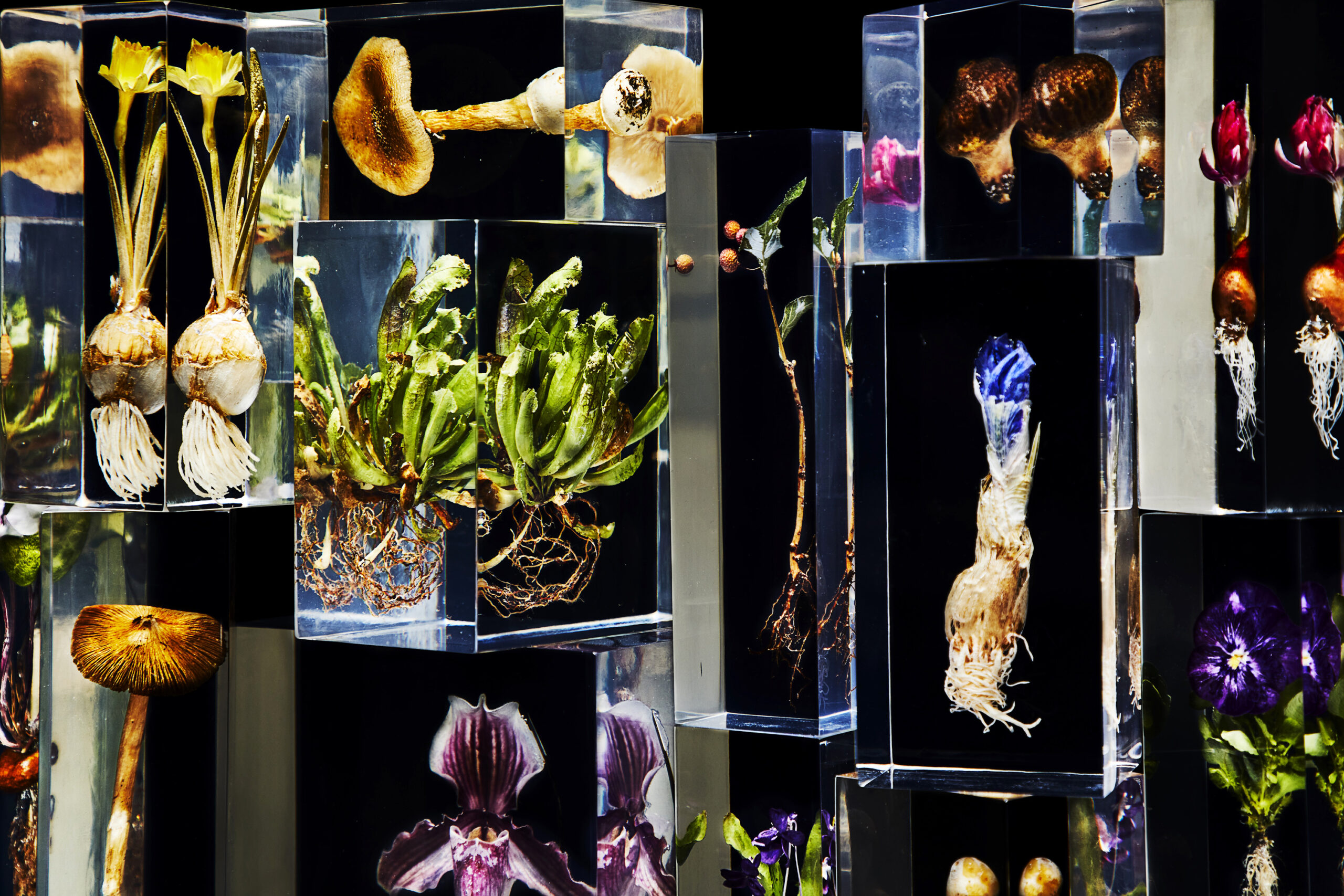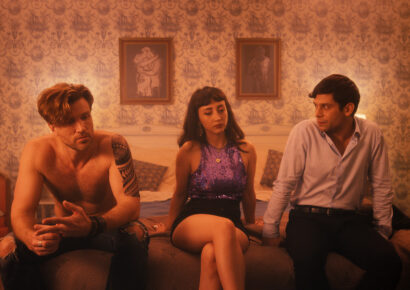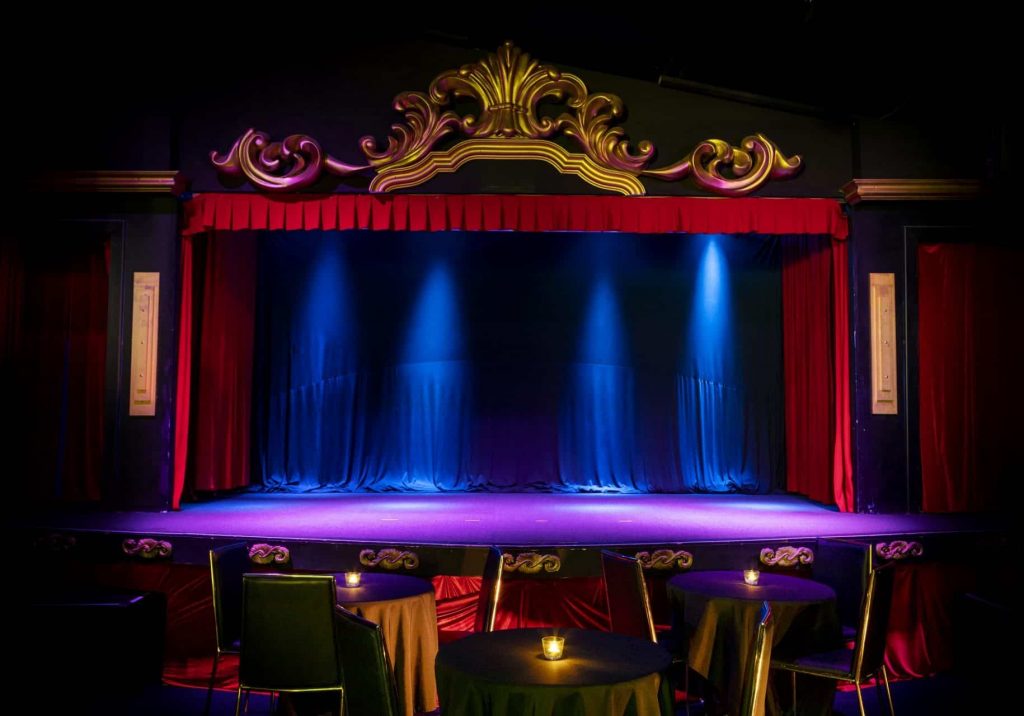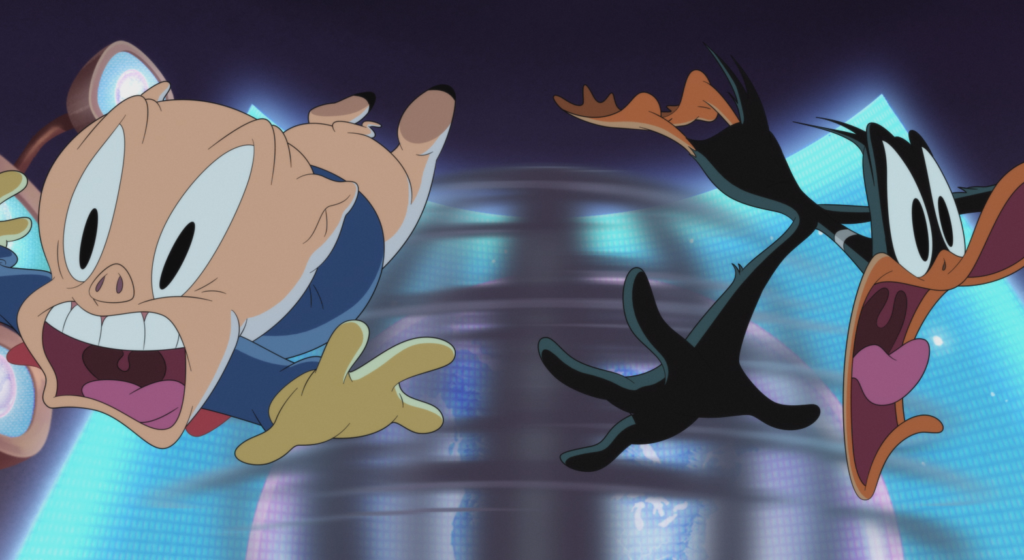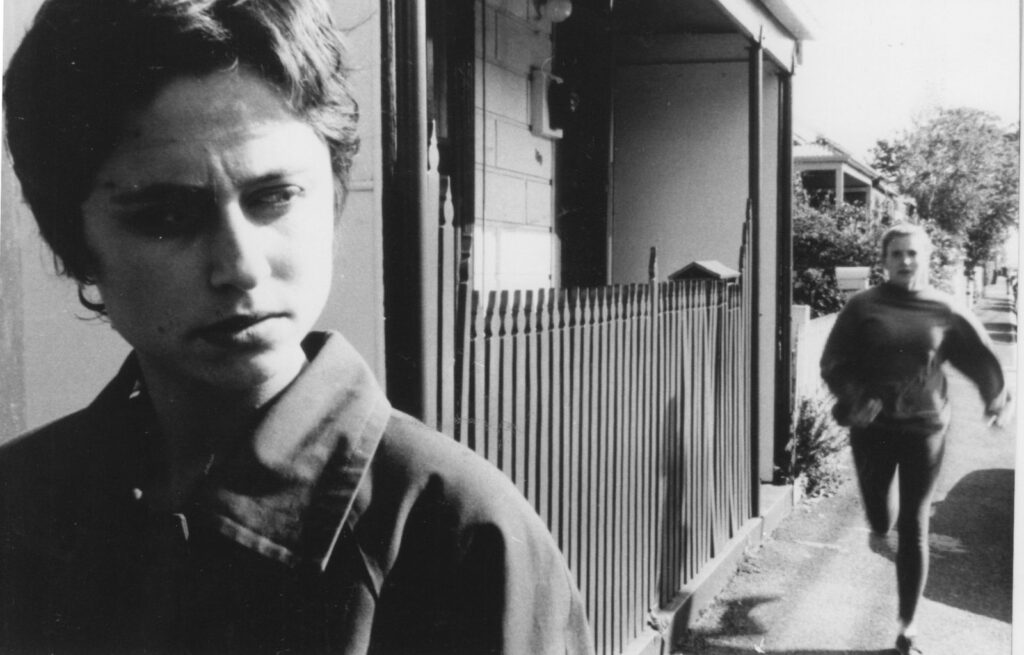From robotics to tapestry, weather patterns to war, mysticism to megacities – NGV Triennial 2023 is a powerful and moving snapshot of the world today as captured through the work of 100 artists, designers and collectives at the forefront of global contemporary practice.
Bringing contemporary art, design and architecture into dialogue with one another and traversing all four levels of NGV International, the NGV Triennial features more than 75 extraordinary projects that invite us to reflect on the world as it is, while also asking how we would like it to be.
With more than 25 world-premiere projects commissioned by the NGV especially for this presentation, the NGV Triennial reveals the extraordinary ways in which leading and emerging artists and designers have responded to the most relevant and critical global issues of our time. With many of the works on display entering the NGV Collection, the NGV Triennial establishes a lasting legacy for Victoria that can be accessed for many generations to come.
Stay up to date with what’s happening within the region’s art scene here.
NGV Triennial 2023 highlights
Polish-born Agnieszka Pilat will train Boston Dynamics robot dogs to paint autonomously – a breakthrough in her practice that explores power of technology in contemporary society. Over four months, audiences can witness the robot dogs painting a monolithic durational work. Pilat imagines that in a distant future these paintings will be revered as the first primitive art-making of AI enabled robots.
View this post on Instagram
In a special collaboration with Paris haute couture house Schiaparelli, the NGV has invited artistic director Daniel Roseberry to present a selection of works from recent collections alongside a collection of gilded surrealist accessories and body adornment. Presented within an immersive and celestial environment, the display highlights Roseberry’s interest in pushing the boundaries of couture practice, the elemental, and his view that art and fashion can question, shape and address the concerns of contemporary life.
Counter-culture icon Yoko Ono will present a large-scale text-based work on the NGV International façade. The multi-media artist who works in performance, instruction, film, installation, music, and writing, will draw upon her Instruction Pieces and major public art commissions around the world for this poignant work. Ono’s text works speak to her conceptual practice of over 60 years, and offer declarative, poetic, confessional and political commentary.
View this post on Instagram
NGV Triennial will also present an exciting selection of recently acquired work by British artist Tracey Emin, whose autobiographical and confessional practice spans film, painting, drawing, installation and sculpture. Highlights include a five-metre-high text-based neon light installation of Emin’s own handwriting, abstract and tactile bronze sculptures, plus gestural and figurative paintings that confront moments of extreme emotion, anguish, elation or pain.
Senior Paris-based and American-born sculptor Sheila Hicks presents Nowhere to Go, 2022, a major sculptural installation utilising Hicks’ signature bulbous forms of brightly coloured fibre. Stacked high against a wall, the forms gather to create an imposing and yet playful installation that celebrates the experience of architectural space and the emotional potential of colour.
David Shrigley OBE, known for his darkly humorous artworks which reflect on the banality and absurdity of everyday life, presents his monumental public sculpture, Really Good, 2016. The work was originally conceived for the Fourth Plinth in London’s iconic Trafalgar Square, in the immediate aftermath of the UK’s decision to leave the EU. Taking the form of a seven-metre-high thumbs-up, the sculpture is characteristic of the self-conscious irony often found in Shrigley’s work and is intended as both a satirical and sincere gesture.
View this post on Instagram
Collaborators Elmgreen and Dragset offer a dynamic sculptural installation where multiple works combine to traverse the artists’ unique approach to sculpture and installation. The Painter, Fig. 1, 2021, depicts a male figure, barefoot and shirtless, caught in the process of making a sweeping black mark across a white canvas. In The Balcony, a figure leans out from above to photograph the audience. Above it all is What’s left?, a tightrope stretched across the void, a lone figure clings to the rope, seemingly to drop at any moment, to a tragic fate.
Other highlights include Mun-dirra, a monumental one-hundred-metre-long woven fish fence which was produced over two years by ten artists working with apprentices in Maningrida, Arnhem Land. The immersive installation, which invites audiences inside it, represents one of the two common types of fish traps produced in the area. The weavers are from the Burarra language group from the east-side Arnhem Land who specialise in the customary weaving. The artists use the woven form to tell a powerful story of matrilineal knowledge transference, as well as how Yolngu people have lived sustainably with the land for generations.
For the NGV Triennial, Tokyo-based artist Azuma Makoto will present a room sized installation as an homage to the magical beauty and lifeforce of plants. After freezing a multitude of Australian flowers and botanicals into crystalline acrylic blocks, the artist places these jewel-like sculptural elements in dialogue with a beguiling multi-screen film depicting the life and death of flowers. Makoto asks us to explore the complex and fragile relationship between humans and plants.
View this post on Instagram
American artist Hugh Hayden, whose work explores ideas of class, race, education and cultural assimilation, will exhibit his 2022 installation, The end, for the NGV Triennial. Taking over an entire gallery space, the work depicts an apocalyptic elementary school classroom – replete with desks and chairs – that has been overrun with branches and dodo skeletons. Also on display will be Hayden’s 2020 work The Cosby’s, which comprises a series of cast iron skillets that have been reimagined as West African masks – a commentary on the cultural impact of the African diaspora on American entertainment, food, industry, and society.
Megacities is large-scale, NGV-commissioned presentation that invites ten leading street photographers to capture the urban environment of ten global megacities, with a population exceeding 10 million: Cairo, Dhaka, Jakarta, Delhi, Sao Paulo, Shanghai, Seoul, Lagos, Tokyo and Mexico City. Working collaboratively with the NGV, the photographers will stage their work in a dynamic, immersive environment and present a thought-provoking fact of the twenty-first century, an urban phenomenon – enunciating that for the first time in history the dominant human habitat is the city, and that we are rapidly becoming an urban species.
Three key thematic pillars of Magic, Matter and Memory anchor the 2023 NGV Triennial. Rather than forming a structure for the exhibition’s organisation and the selection of works, the themes offer insight into the concerns of the artists and designers in the exhibition. The three themes are entangled discourses that flow between and across the projects within the exhibition.
The theme of Magic delves into belief systems, allegory and symbolism, revealing some of the ways that human spirituality has shaped the world around us. Matter draws together nature, materials and making, highlighting the central role that materials and the natural world play in shaping human culture. Finally, Memory shines a light on both the histories of people, places and objects that make up the complex tapestry of our contemporary world.
Tony Ellwood AM, Director, NGV, said: ‘In the three years since the last NGV Triennial, the world has experienced a great many structural shifts, including a global pandemic. Through the work of more than 100 artists, designers, architects and collectives from Australia and around the world, the NGV Triennial offers a powerful insight into the ideas and concerns empowering creative practice in 2023.
‘The artists, designers and architects of our time play an important role in helping us to understand, navigate and relate to the world around us. The 2023 NGV Triennial offers audiences a valuable opportunity to experience new and surprising forms of creative expression from around the globe, which, together, present a compelling snapshot of the world as it is, while also asking how we would like it to be,’ said Ellwood.
The NGV Triennial is on display from 3 December 2023 – 7 April 2024 at NGV International, St Kilda Road, Melbourne. Entry is FREE. Further information is available via the NGV website: NGV.MELBOURNE.
Further highlight commissions, acquisitions and large-scale presentations at NGV Triennial 2023:
- Hoda Afshar (b. Iran): The Fold, 2023, a newly commissioned work by Hoda Afshar investigates images by the French psychiatrist and photographer Gaëtan Gatian de Clérambault (1872-1934), who photographed veiled Islamic women, and sometimes men, in Morocco. Unfolding in three parts, Afshar’s large-scale installation continues the artist’s decade-long exploration into how the medium of photography became – and continues to serve as – one of the central tools in the project of colonialism thought its representations of Islamic women.
- Studio Fernando Laposse: Conflict Avocados, Laposse’s most ambitious project to date, explores the troubled ethics behind avocado production in Mexico, the world’s largest producer and exporter of the fruit. Focusing on town of Cherán in the state of Michoacan, Laposse recounts through furniture, objects, film and a major 40m long narrative textile – the Cherán Tapestry – the struggle by local women to defend their home from criminal cartels and preserve their forest ecosystem, which is being cleared for avocado production. Laposse offers an optimistic perspective where local solidarity, artisanal craft and ecology work together to rebalance the situation.
- John Gerrard (b. Ireland): Irish artist John Gerrard has played a central role in the development of simulation within contemporary art. Utilising real-time computer graphics, his digital artworks often examine contemporary political issues, such as energy production, food systems, information flows and climate change. His large-scale simulation, Flare (Oceania), 2022, presents a seascape based on photographs taken by the activist Uili Lousi, who is documenting the rising temperatures of his ancestral ocean near Tonga. The work offers a poignant comment on the existential threat of rising seas due to carbon induced climate change driven by the burning of fossil fuels.
- Petrit Halilaj (b. Kosovo): Kosovan artist Petrit Halilaj will create a new iteration of his immersive installation, Very volcanic over this green feather, 2022. Drawing from lived experience, the installation takes inspiration from Halilaj’s childhood drawings, made in the Kukës II refugee camp in Albania during the height of the Kosovan War. Interspersing depictions of rural landscapes, animals, birds and scenes of death and destruction, the installation reveals the slippery relationship between the real and the imagined, personal and collective memory, and recorded history and lived experience.
- Sheila Hicks (b. USA): Senior American artist Sheila Hicks will stack nets filled with blue fabric to form an avalanche of colour in a corner of one large gallery space. Nowhere to Go, 2022, is a major sculptural installation utilising Hicks’ signature bulbous and joyful forms of brightly coloured fibre. Hicks is one of the world’s foremost artists and sculptors working with textiles, fibre and colour. Known for her experimental weavings and voluminous sculptural textile works, Hicks’ varied approach to weaving and tapestry made her a leader of the Fibre Art movement of the 60s and 70s.
- Yee I-Lann (b. Malaysia): For the NGV Triennial, Yee I-Lann has collaborated with Bajau Laut weavers, who reside off the coast of Sabah, Malaysia, to make tikar – woven mats. Tikar/Meja (Mat/Table) is a large-scale display of 60 Bajau Sama Dilaut mats, upon each of which is woven an image of a table. The table is a representation of administrative power and control – colonial, patriarchal and state power. They are the opposite of the non-hierarchical, community-based, open platform of the tikar. Tikar/Meja forms a message from the people on the mat to the people at the table: in rolling up the mat, the table is engulfed.
- Lehuauakea (b. Hawaii): Mele O Nā Kaukani Wai is a mixed-media wall-based installation that addresses the need to integrate Indigenous traditional ecological knowledge and western science in today’s ongoing global environmental crises. Using traditional ʻohe kāpala (carved bamboo printing tools) to print patterns that tell stories through intergenerational symbolism, Lehuauakea employs the metaphor of the meeting point of freshwater and saltwater where the river meets the sea to portray this complex issue.
- Illuwanti Ken (b. Australia): Iluwanti Ken’s newly commissioned work comprises of three paintings, collectively spanning 5 metres, which tell the story of Walawuru Tjukurpa (Mother Eagles). The large-scale paintings pulsate with energy and movement to reveal activities of the walawuru (eagles) as they journey across the landscape. The paintings will be accompanied by an audio recording of Ken singing her native Pitjantjatjara language.
- Thomas J Price (b. UK): Working primarily in figurative sculpture, Thomas J. Price’s addresses issues of identity, representation and power. For the NGV Triennial, Price will present two large-scale sculptures, All In, 2021, and Reaching Out, 2020, which confront the lack of people of colour represented in public statuary in the UK. Intentionally ambiguous, Price’s figures do not depict a certain individual, but are instead drawn from an amalgamation of found sources, including observed individuals and stereotypes represented in the media.
- Smac McCreanor (b. Australia): The video work Hydraulic Press Girl takes inspiration from videos of people reacting to the content published by the popular Official Hydraulic Press Channel, which captures a myriad of objects being compressed by a hydraulic press. Each episodes shows side-by-side frames of Smac’s interpretative movement and the active hydraulic press harmoniously in motion. Smac’s movements echo that of the pressed object and humorously highlight the absurdity of the material world.
- Betty Muffler (b. Australia): The epic scale of Ngangkari Ngura (Healing Country) – spanning 5 metres long and 3 metres high – provides an expansive representation of Country from the perspective of the eagle, including significant sites such as waterholes and waterways. Embracing a subtle monochromatic palette, the work is informed by the artist’s status as a Ngankari (traditional healer). Muffler, who started painting late in life, won Best Emerging Artist prize at the National Aboriginal and Torres Strait Islander Art Awards (aka NATSIAA awards) in 2017, with this work.
- NGV Kids: For the NGV Triennial, the NGV will present a world-premiere all-ages exhibition that invites kids and their families to experience the work of leading contemporary artists and designers in an interactive and playful environment. The NGV Kids Summer Festival this year celebrates the work of the NGV Triennial artists and designers with an exciting 9-day program of all-ages workshops, activities and events.
The NGV Triennial is on display from 3 December 2023 – 7 April 2024 at NGV International, St Kilda Road, Melbourne. Entry is FREE. Further information is available via the NGV website: NGV.MELBOURNE.
